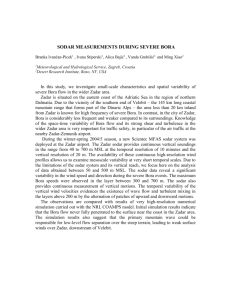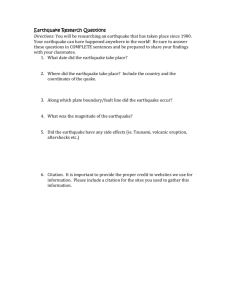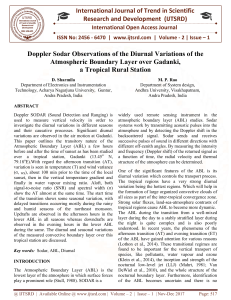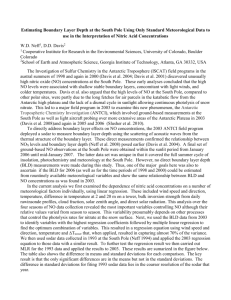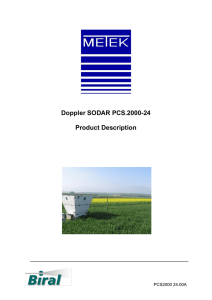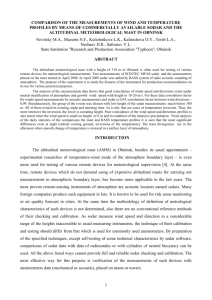5.6
advertisement
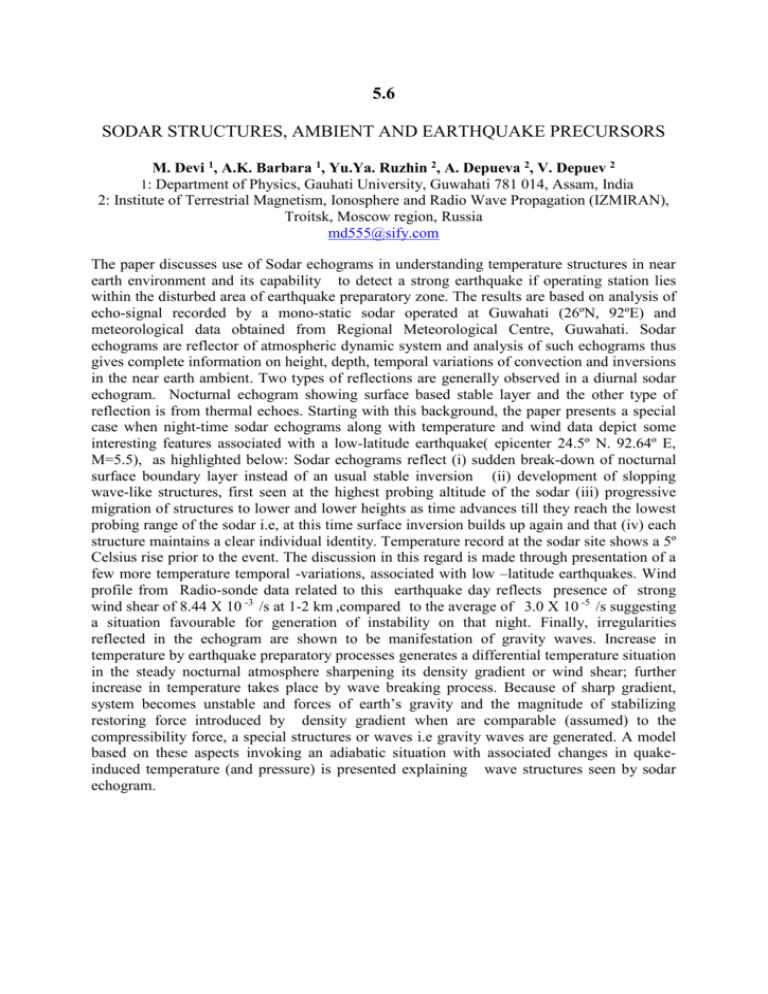
5.6 SODAR STRUCTURES, AMBIENT AND EARTHQUAKE PRECURSORS M. Devi 1, A.K. Barbara 1, Yu.Ya. Ruzhin 2, A. Depueva 2, V. Depuev 2 1: Department of Physics, Gauhati University, Guwahati 781 014, Assam, India 2: Institute of Terrestrial Magnetism, Ionosphere and Radio Wave Propagation (IZMIRAN), Troitsk, Moscow region, Russia md555@sify.com The paper discusses use of Sodar echograms in understanding temperature structures in near earth environment and its capability to detect a strong earthquake if operating station lies within the disturbed area of earthquake preparatory zone. The results are based on analysis of echo-signal recorded by a mono-static sodar operated at Guwahati (26ºN, 92ºE) and meteorological data obtained from Regional Meteorological Centre, Guwahati. Sodar echograms are reflector of atmospheric dynamic system and analysis of such echograms thus gives complete information on height, depth, temporal variations of convection and inversions in the near earth ambient. Two types of reflections are generally observed in a diurnal sodar echogram. Nocturnal echogram showing surface based stable layer and the other type of reflection is from thermal echoes. Starting with this background, the paper presents a special case when night-time sodar echograms along with temperature and wind data depict some interesting features associated with a low-latitude earthquake( epicenter 24.5º N. 92.64º E, M=5.5), as highlighted below: Sodar echograms reflect (i) sudden break-down of nocturnal surface boundary layer instead of an usual stable inversion (ii) development of slopping wave-like structures, first seen at the highest probing altitude of the sodar (iii) progressive migration of structures to lower and lower heights as time advances till they reach the lowest probing range of the sodar i.e, at this time surface inversion builds up again and that (iv) each structure maintains a clear individual identity. Temperature record at the sodar site shows a 5º Celsius rise prior to the event. The discussion in this regard is made through presentation of a few more temperature temporal -variations, associated with low –latitude earthquakes. Wind profile from Radio-sonde data related to this earthquake day reflects presence of strong wind shear of 8.44 X 10 -3 /s at 1-2 km ,compared to the average of 3.0 X 10 -5 /s suggesting a situation favourable for generation of instability on that night. Finally, irregularities reflected in the echogram are shown to be manifestation of gravity waves. Increase in temperature by earthquake preparatory processes generates a differential temperature situation in the steady nocturnal atmosphere sharpening its density gradient or wind shear; further increase in temperature takes place by wave breaking process. Because of sharp gradient, system becomes unstable and forces of earth’s gravity and the magnitude of stabilizing restoring force introduced by density gradient when are comparable (assumed) to the compressibility force, a special structures or waves i.e gravity waves are generated. A model based on these aspects invoking an adiabatic situation with associated changes in quakeinduced temperature (and pressure) is presented explaining wave structures seen by sodar echogram.
